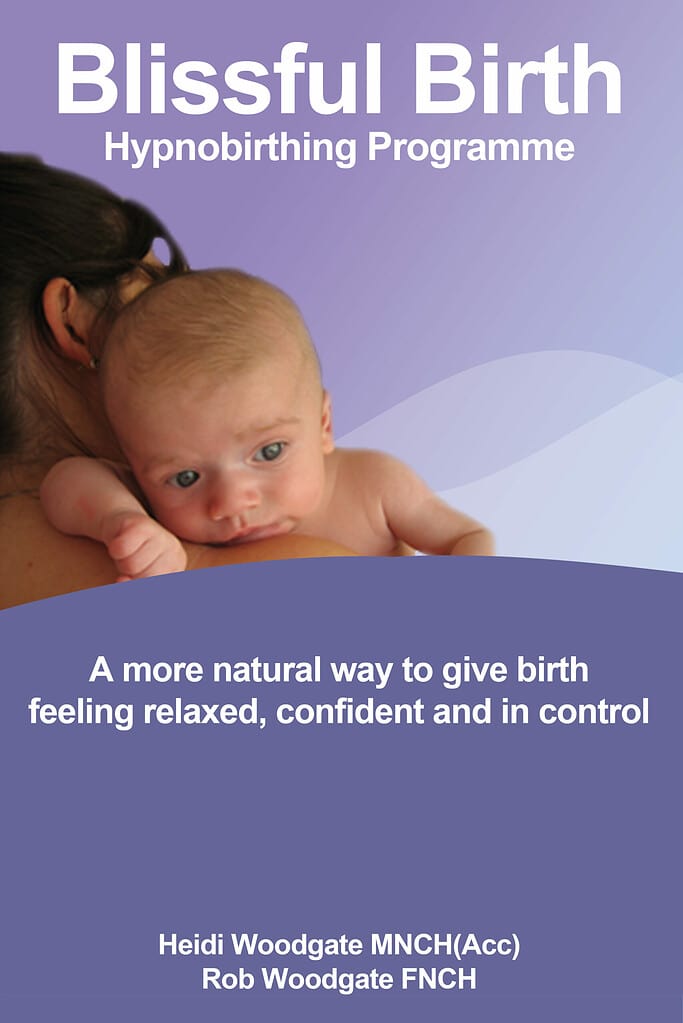If you look at videos or photographs of births, you’ll notice that many births take place in a lying-down position. While common, this is not the best birthing position, especially for hypnobirthing.

Hypnobirthing is a birthing technique designed to combat pain and fear during the birthing process. You can learn how to do hypnobirthing here.
However, lying down is known to slow down labor, and during the early stages, some research suggests it can worsen the pain.
Here are the 9 best birthing positions for a hypnobirth to feel more comfortable and in control during labor.
Table of Contents
1. The Upright Position
Remaining upright during labor means you can have gravity on your side while giving birth. This may help to speed up labor, especially if you also walk around and rock your hips.
Many people find that the upright position helps to relieve backache and the overall pain of contractions.
However, if your blood pressure is high, you may be advised to consider a different position on this list. Continuous fetal monitoring (especially heart rate) may also be advised if you’re going to give birth upright.
2. Hands And Knees
The hands and knees position is a favorite with women giving birth. Also known as all fours, you can do this position on a bed or on a mat on the floor.
This position takes pressure off your spine, which helps with back pain.
You may have been told that spending time on all fours can encourage your baby to change position, but the research suggests this may be an “old wives tale”.
You might notice that your arms get tired in this position. If that’s the case, don’t worry. There are plenty of other positions on this list you can rotate through when it feels right.
3. Squatting
Squatting during labor is a good alternative to the upright birthing position.
This position still allows your body to stay mostly upright, but it also opens your pelvis and can help you to bear down when it’s time to push.
For the squatting position to work, having the baby in the right position is important. Squatting is also best done with a birthing stool to avoid tearing.
4. Using A Birthing Ball
A birthing ball can be your best friend during hypnobirthing.
Using a birthing ball means you can sit down during labor, keeping your body upright while being able to move your hips.
Birthing balls can also be used as support for the squatting position.
If your arms get tired on all fours, you can stay kneeling and lean your upper body onto the birthing ball instead.
Because these balls are perfect for supported hip rocking, they frequently help to shift babies into better positions for birth.
They can also take some pressure off the spine and speed up dilation. Note that a regular exercise ball can often work just as well.
It’s best to have a partner to help you keep your balance and get you into the variations of this position.
5. Birthing Stool
We recommended using a birthing stool if you want to squat during labor.
If you use a birthing stool, you will be able to rock your hips back and forth without losing your balance while squatting.
However, there are other ways to use a stool while hypnobirthing.
A birthing stool can be used while on all fours, and if your birth plan includes a water birth, you might be able to find a stool that works in the pool.
Birthing stools can take pressure off your back during labor and encourage the cervix to dilate faster. All of this may help baby to make their way down more quickly.
If you are at increased risk for hemorrhage or major blood loss during labor, however, using a birthing stool while sitting or squatting may not the best choice.
6. Reclining
Lying down fully may not be the best position for active labor. However, reclining can be helpful in some situations.
You can recline (lean backward) on a bed, against an exercise ball, or even just against a wall.
Doing this may make you feel better if you’re getting tired or have a lot of tension in your muscles.
With that said, you should try to avoid staying in a reclined position for too long, especially if your labor is slow.
This is because reclining backward can make gravity work against you.
7. Lying On Your Side
Another good alternative to lying on your back during a hypnobirth is lying on your side.
Labor can be a very long and tiring process, so you might feel the need to rest and conserve your energy at some point.
Whether you choose to stay on your right or left side is entirely up to you. You can switch sides as often as you need to.
This position is great for effective breathing, which is a cornerstone of hypnobirthing (see also: 10 Tips For A Positive Hypnobirth)
While being fully reclined can make breathing more difficult, turning on your side is the ideal position for relaxation and controlled breathing.
Additionally, if you have a peanut-shaped birthing ball, you can place this between your legs while lying on your side.
This opens up your hips and pelvis, encouraging baby to rotate and move downward.
Side lying is better than standing if you have high blood pressure, and it means you can relax during labor, which helps with hypnobirthing. Studies show that this position helps to deliver oxygen to the baby, too.
Unfortunately, this position might not be the best choice if baby’s heartbeat needs monitoring a lot.
8. Lunging
You might think of lunging as something you struggle through in the gym, but this position can be really helpful during labor.
Much like squatting, it means you can stay upright, leaning forward while opening your pelvis, so baby has more room to come down or rotate if needed.
This works to encourage optimal fetal positioning.
You can try lunging for hypnobirthing with your front foot on a chair.
If a chair is too high, you can use smaller objects to prop up your front foot. Having a birthing partner is useful here to help you keep your balance.
9. Climbing Stairs
Stair climbing is a good way to incorporate movement into your labor. It allows you to use gravity to move baby downward and encourage rotation through pelvic opening.
Counting as you breathe is a common hypnobirthing technique, and climbing stairs can help you get into a good rhythm to do this.
Admittedly, climbing stairs may be the absolute last thing you feel like doing during labor.
In fact, climbing stairs is not recommended during the second stage of labor (which is when the cervix is fully dilated). Instead, you should reserve this position for early labor.
Avoid climbing stairs alone at any point during your labor, especially if your contractions are intense, or you feel tired.
Climbing stairs while fatigued or without being fully in tune with your surroundings can be dangerous.
Stair climbing for hypnobirthing should always be supervised by a partner, midwife, or other medical team member. Above all, it must be done carefully.
Final Thoughts
Finding a good position for giving birth can add to the pain-relieving, distress-reducing effects of hypnobirthing techniques.
During a hypnobirth, it is important to feel comfortable and in control. Not everyone will feel this way laying down.
Squatting, standing, getting on your hands and knees, lunging, reclining, resting on your side, or even climbing stairs can speed up your labor and reduce discomfort.
When choosing a position for hypnobirthing, take into account your own comfort, physical urges, breathing, and energy levels.
Also, bear in mind any interventions or monitoring your baby might need, as some positions can make this more difficult.
Frequently Asked Questions
Why Do Birth Positions Matter In Hypnobirthing?
Birth positions always matter, but in hypnobirthing, the wrong position can make it more difficult to remain calm and feel in control.
Trusting your body is one of the core principles of hypnobirthing. Being more informed about the best birthing positions, and knowing when and how to move during labor, can help with this.
Effective hypnobirthing also relies on breathing. Being flat on your back can make breathing difficult, whereas other labor positions, like being on your side or being upright, optimize breathing.
Do I Have To Stick To One Position When Hypnobirthing?
Not at all! The benefit of knowing many different positions ahead of time is that you can change positions when you feel the need.
Hypnobirthing involves trusting your body, so if you feel the urge to shift positions (assuming it is safe to do so), this is encouraged.
Most women will not want to stay still throughout labor, in any case.
Do These Positions Work For Water Birthing?
Many of these hypnobirthing positions can be incorporated into a water birth. For example, squatting, reclining, and all fours are all easily achievable in a birthing pool.
However, you probably won’t be able to use a ball while in the pool. Instead, if both are available, you can move between the two depending on what feels best in the moment.




